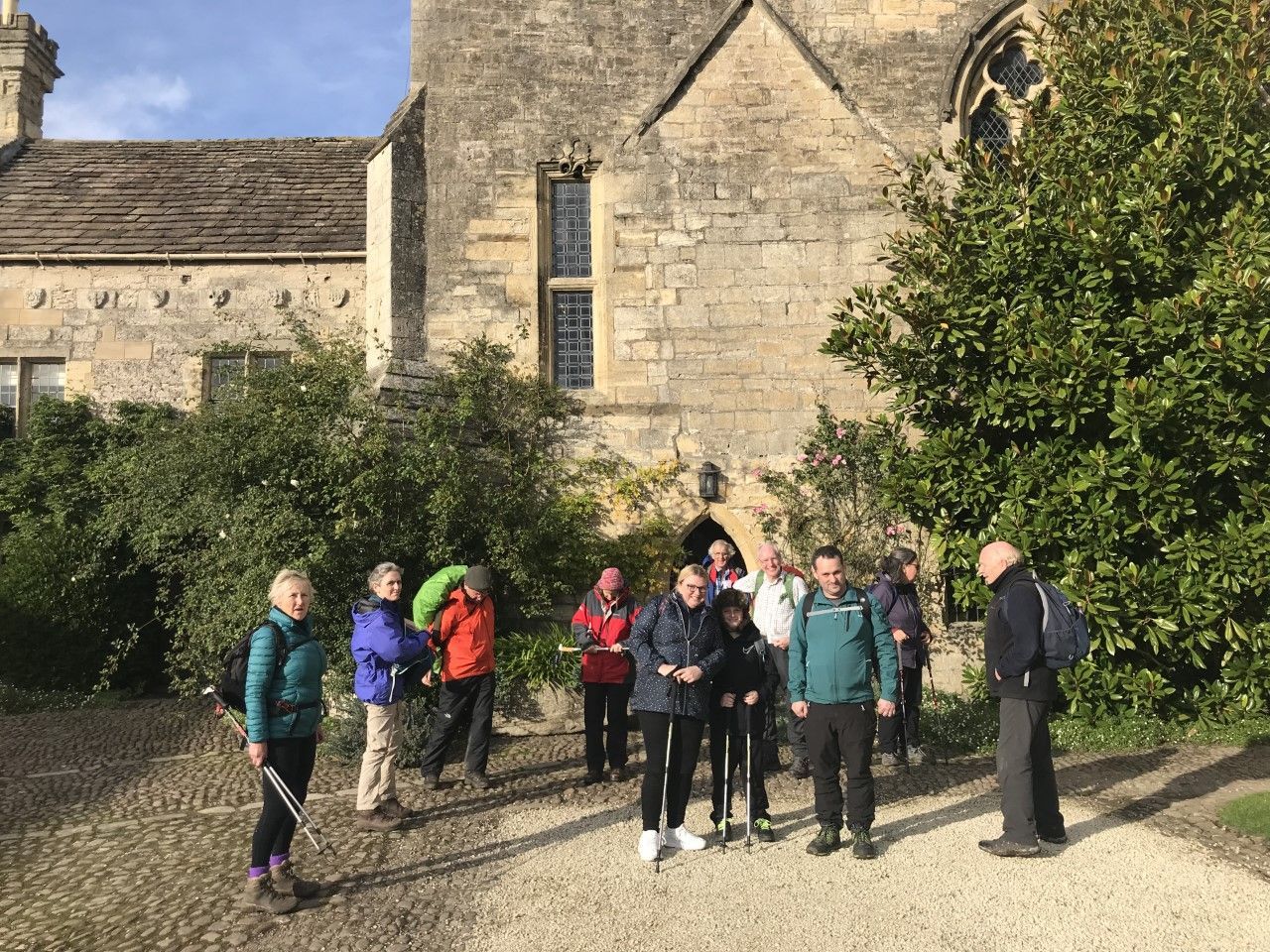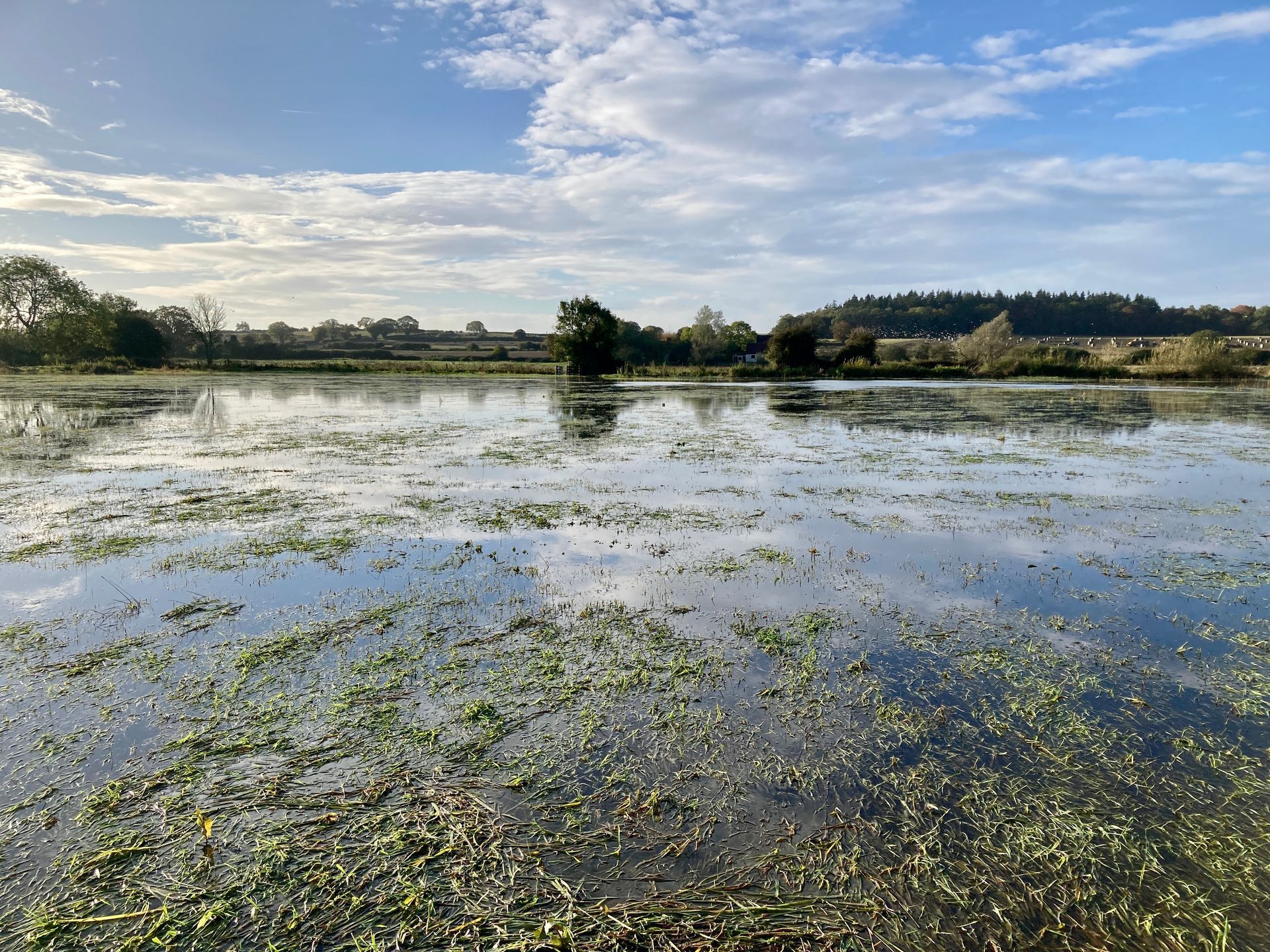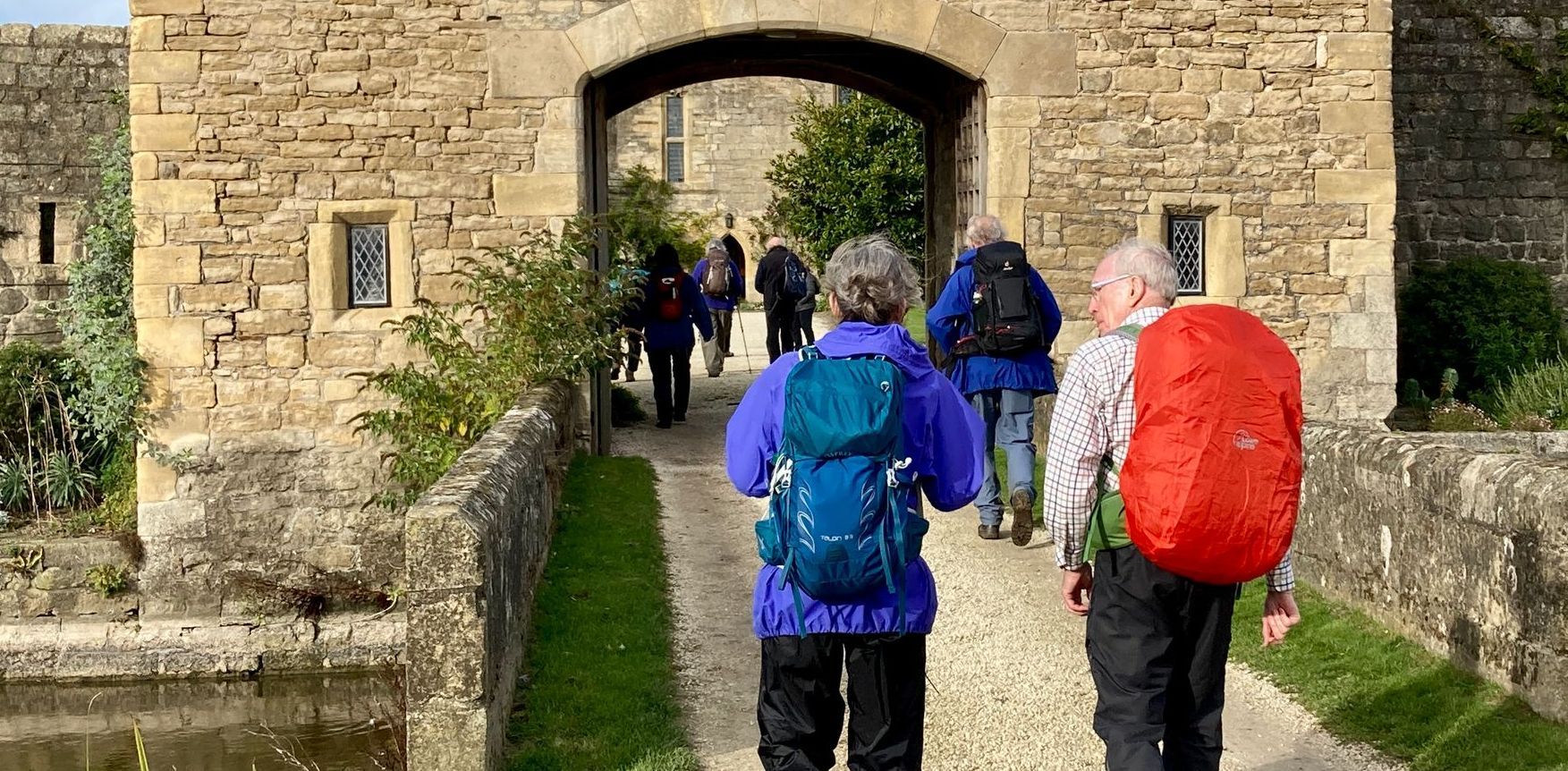The Way of the Annunciation
A Pilgrim Way for the Diocese of East Anglia from the Cathedral of St John the Baptist in Norwich to the Catholic National Shrine of Our Lady of Walsingham in Houghton St Giles and the Church of the Annunciation, Little Walsingham
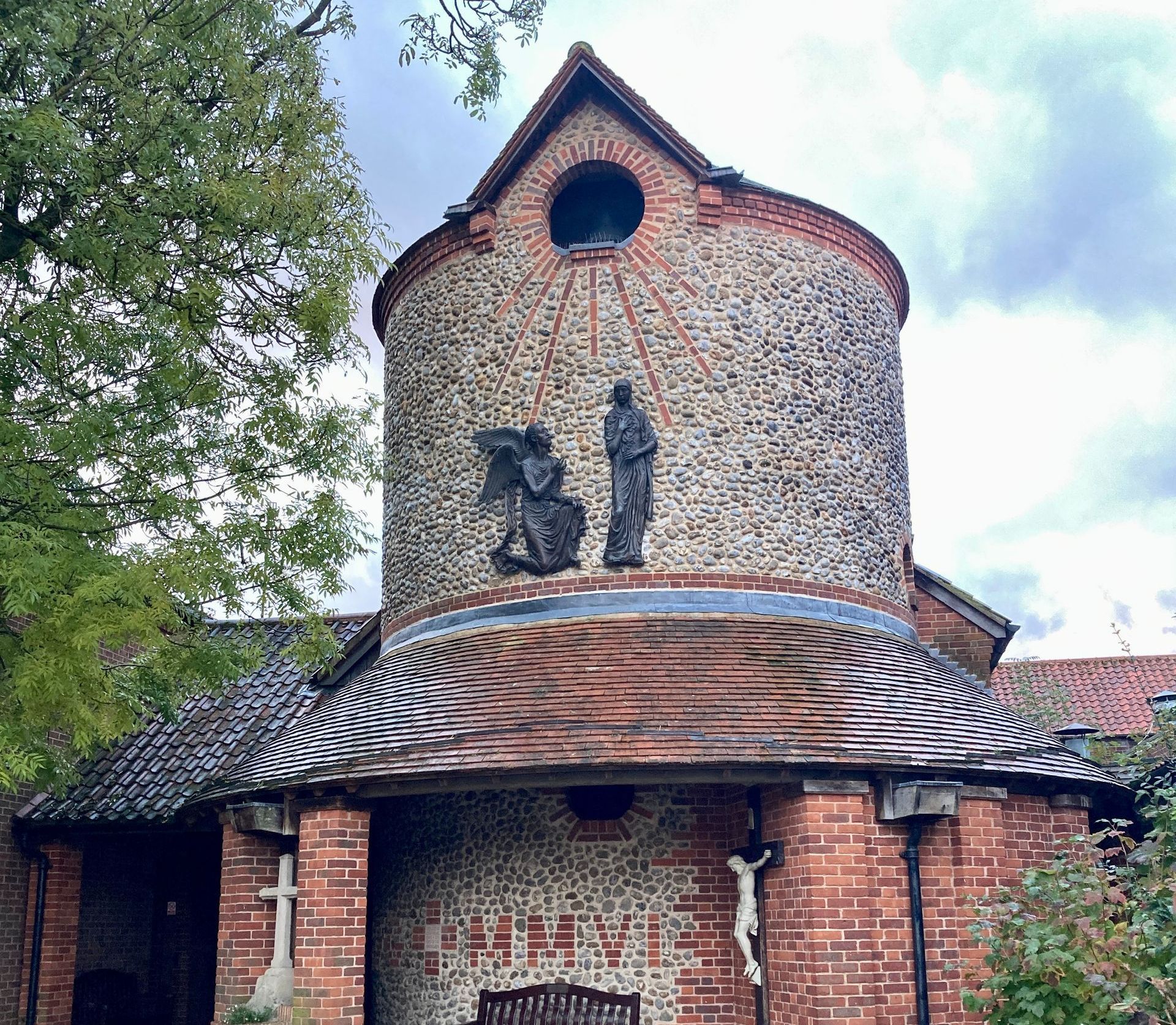
The tower of the Church of the Annunciation, Little Walsingham
About the route
The Annunciation is the visit of the Archangel Gabriel to the Virgin Mary, during which he told her that she would conceive a son through the power of the Holy Spirit. Mary’s ‘yes’ to this is celebrated on 25th March almost universally throughout Christianity.
The Way follows the Wensum and Walsingham Ways for much of the distance, along a former railway track, quiet back roads and across farmland. The route passes the site of the former Saxon Cathedral at Elmham.
At Great Ryburgh the Pilgrim Way leaves the Walsingham Way to visit the Church of St Anthony of Padua in Fakenham, then on to the Catholic Shrine in Houghton St Giles. The final section follows the Pilgrim Way to the Church of the Annunciation at Little Walsingham. Pilgrims may also wish to visit the ruins of Walsingham Priory and the Anglican & Orthodox shrines in Walsingham.
You can find out more about the Way and download the GPX file by clicking on the LEARN MORE tab in the
interactive map below
Guidance
Using the tabs in this section you can find the information you need for your pilgrimage.
The Outer Way provides practical advice about the route.
The Inner Way describes the spiritual highlights.
Using the button below you can download details of the inner and outer ways and the walking guidance and maps.
Stages: route, food & drink, accommodation and public transport
1. The Cathedral of St John the Baptist in Norwich to Fakenham Rd: 6.5 miles
The Cathedral can be reached easily by foot from the railway station and the bus & coach station. The route passes numerous places of worship before leaving Norwich and following the cycle path all the way to Fakenham Rd. There are plenty of places to eat, drink and sleep in Norwich. Near the end of the stage there are pubs and shops in Taverham and Drayton and accommodation at Wensum Valley Golf Club. There are bus stops on Fakenham Rd.
2. Fakenham Rd to Elsing: 10.7 miles
The route leaves the Marriott’s Way after the A1270 and follows the Walsingham Way (WW) apart from one diversion to reduce road walking and avoid a ploughed field. NB There is a risk of flooding, see the guidance notes. There is a pub just north of the route at Lyng and a deli/restaurant in Elsing (check opening days). There are bus stops in Elsing.
3. Elsing to North Elmham: 6.5 miles
The way follows the WW mostly along quiet lanes. There is a pub and convenience store at Swanton Morley and pubs at Worthing and North Elham where there is also a convenience store. Soon after Elsing there may be camping at Hunters Hall and B&B at Castle Farm. There are buses at Swanton Morley and North Elmham.
4. North Elmham to Great Ryburgh: 4.8 miles
The route follows the WW to Great Ryburgh, mostly on lanes. St Andrew’s Church in Great Ryburgh welcome pilgrims and offers a place to camp, kitchen and w.c. as well as basic shelter if the weather is bad. You can contact the churchwarden on 01328 829413. There is a pub, fish & chip shop and village shop in Great Ryburgh as well as a bus service.
5. Great Ryburgh to Fakenham: 4.8 miles
The route leaves the WW and heads west and then north on roads to reach Fakenham. There is no direct public footpath from Great Ryburgh to Fakenham, although one has been proposed. There are all facilities in Fakenham. In the past groups have camped on the grounds of the Catholic church and this might be possible in future.
6. Fakenham to Walsingham: 5.4 miles
There route follows quiet lanes to the Catholic Shrine and then the disused railway line path to Little Walsingham. There is a café at the Shrine and pilgrim accommodation associated with the Catholic and Anglican shrines. There are pubs and shops in Little Walsingham and an infrequent bus service to Kings Lynn for trains and Fakenham.
Public transport links
Trains:
https://www.nationalrail.co.uk/
Coaches:
https://www.nationalexpress.com/en
Buses:
https://www.firstbus.co.uk/norfolk-suffolk/routes-and-maps/route-maps
Pilgrim people and places
The Shrine of Our Lady at Walsingham was established around 1061 when (according to the text of the c 1485 Pynson Ballad) a pious woman called Richeldis de Faverches was led in prayer to Nazareth, where Our Lady showed her the house of the Annunciation, where the Angel had greeted Mary, and asked her to build a replica in Walsingham. This Holy House was built, and a religious community took charge of it. Augustinian Canons built a Priory c 1150 and Walsingham became one of the greatest shrines in medieval Christendom. It was destroyed at the Reformation, but during the C20 Catholic and Anglican shrines have been established and the ruins of the Priory re-opened to the public.
The Catholic Cathedral of St John the Baptist, Norwich
From the mid C17 Jesuits were active in the city and had a chapel which was destroyed in anti-Catholic riots of 1688. The Jesuit mission continued at other sites, later at a chapel on Willow Lane. Before the Catholic Relief Act of 1791, Catholics could also worship in the Duke of Norfolk’s Palace chapel, but when in 1791 a Duke succeeded who conformed to the Church of England, the parishioners purchased land and built a chapel dedicated to St John the Baptist. In 1878 the 15th Duke of Norfolk offered to build a Catholic church in Norwich to fulfil a vow he had made at Lourdes. The site of a former gaol was bought, and George G Scott Jnr was appointed to build a great church in the Early English style. Due to his poor health the work was completed by his brother John Oldrid Scott. The nave was opened in August 1894 with a temporary east wall. Work continued and in December 1910, the Church was opened and dedicated to St John the Baptist. In 1976 it became the Cathedral of the new Diocese of East Anglia. Today it is a truly impressive and moving place of worship in the Early English Gothic style.
The Anglican Cathedral of the Holy and Undivided Trinity, Norwich
Following the Norman Conquest, sees were moved to more secure urban centres, so North Elmham was transferred to Thetford in 1071, and then to Norwich in 1094. Norwich Cathedral was founded as a Benedictine priory, and it remained so until the suppression of the monasteries in 1548. Construction began in 1096, in flint and mortar faced with Caen limestone. On completion the Cathedral close occupied a tenth of the total area of the medieval city, the cloisters were the second largest in England and the spire the second tallest in the country. In 1643, during the English Civil War, a Puritan mob invaded the cathedral and destroyed all Catholic symbols. The building was abandoned the following year and lay in ruins until it started to be rebuilt after the Restoration of the Monarchy in 1660. The cathedral's bosses survived the iconoclasm of the Tudor and Civil War periods and are one of the world's greatest mediaeval sculptural treasures.
In the late Saxon period North Elmham was the principal seat of the Bishops of East Anglia. Excavations have revealed evidence of an Anglo-Saxon cathedral, which fell out of use after 1071 when the seat of the bishop was transferred to Thetford. Between 1091 and 1119 Bishop Herbert de Losinga founded a new parish church for the village and built himself a private chapel on the site of the old cathedral. In the C14 Bishop Henry le Despencer turned the chapel into a house and later fortified it. This may reflect his need for security after his brutal quashing of the Peasants’ Revolt in 1381. There is no record of any bishop occupying the house after Henry’s death in 1406. At the Reformation Thomas Cromwell assigned the property to the vicarage, and it fell into ruin. English Heritage excavated the site during the 1970s, revealing earthworks and ruins of a hearth, arches, towers and walls. The Chapel is open to the public during daylight hours all year round for free.
The Church of St Anthony of Padua, Fakenham
In the early years of the C20 Mass was celebrated in Fakenham in hired rooms, served by priests from King’s Lynn. In 1905 Revd Herbert Gray arrived to serve the district, which included Walsingham, Wells and Dereham. In 1907 a plot of land was bought in Fakenham, and a substantial presbytery was built, with a small brick-built church beside it. The hope was that this church would become the sacristy of a much larger one, but this was never realised. During WW2 the congregation was swelled by foreign soldiers, some of whom settled in the area. In 1947 the Church was extended with a new sanctuary.
The Chapel of St Catherine of Alexandria (Slipper Chapel), Houghton St Giles
The Slipper Chapel was built in the mid C14 to serve pilgrims approaching the end of their journey to the Shrine of Our Lady of Walsingham. Traditionally pilgrims would take off their footwear and walk the last mile barefoot. In 1511 Henry VIII and Catherine of Aragon, did so, but at the Reformation Henry had the shrine destroyed. The Slipper Chapel became successively a poor house, a forge, a barn and a cowshed. In 1896 Miss Charlotte Boyd, a Catholic convert, bought and restored the Chapel. She had the idea of reviving the chapel as a place of pilgrimage and the Guild of Our Lady of Ransom brought the first public pilgrimage to Walsingham on 20th August 1897. As the years passed devotion to Our Lady of Walsingham grew and the number of pilgrimages increased. In 1933, prompted by the growth of the Anglican shrine at Walsingham, Cardinal Bourne transferred the Shrine of Our Lady of Walsingham from King’s Lynn to the Slipper Chapel. In 1934 the Cardinal led 12,000 people on a pilgrimage to the chapel, re-enthroning an image of Our Lady which had been designed from a late medieval priory seal. In the same year the bishops of England & Wales declared the Chapel a national shrine.
The Chapel of Our Lady of Reconciliation, Houghton St Giles
After WW2 there were increasing numbers of pilgrims to the Shrine, so Mass was often said in the open air beside the Slipper Chapel. In the late 1960s the Diocese of Northampton began to improve the facilities and work began on a large open-sided structure on a concrete dais, with a granite altar and timber roof, providing a more permanent covered outdoor sanctuary. In the 1970s it was decided to construct a large chapel over the dais in the shape of a Norfolk barn, seating 350 with a sanctuary which could be opened in summertime for larger outside congregations. Building began in 1980 and the completed building was consecrated in May 1982. From 1968 to 2014 the shrine was run by priests of the Society of Mary (Marists). In 2015 Pope Francis conferred the title of minor basilica on the Shrine, one of only three in England. The Shrine attracts some 150,000 pilgrims annually with about 35 major pilgrimages. The largest are those of the Tamil community who bring about 6,000 pilgrims each May and July, some being Christian and some Hindus. The Syro-Malabar community bring about 5,000 pilgrims on their National Pilgrimage in July.
The Church of the Annunciation, Little Walsingham
During the C19 Little Walsingham was in the mission territory of King’s Lynn, and from 1905 it was served from Fakenham. In 1937 a community of Capuchin friars settled at Little Walsingham and bought two cottages in Friday Market, which they had demolished to provide the site for a new church. The friars left in 1948 with the church unbuilt, but in 1950 a temporary church was built by the Diocese of Northampton. In 1968 the Marists took over the care of the national shrine and the parish of Walsingham. Work started on a new church in 2005 and it was consecrated 2006. It was designed to be carbon neutral with a round tower, attractive brick and flint detailing, and a landscaped forecourt.
Walsingham Abbey grounds and the ruins of Walsingham Priory
Walsingham Priory was a monastery of Augustinian Canons which housed the original replica of the house of the Holy Family in Nazareth. The shrine became a famous place of pilgrimage: Henry III came in 1241, Edward I in 1280 and 1296, Edward II in 1315, Henry VI in 1455, Henry VII in 1487, and Henry VIII in 1513. In 1537, while the last prior, Richard Vowell, was paying his respects to Thomas Cromwell, the sub-prior Nicholas Mileham was charged with conspiring to rebel against the suppression of the lesser monasteries. He was convicted of high treason on flimsy evidence and hanged outside the Priory walls. In July 1538, Prior Vowell assented to the destruction of Walsingham Priory and assisted the king's commissioners in the removal of the figure of Our Lady and the despoliation of the shrine. For his complicity Vowell received a pension of £100 a year, while fifteen of the canons received pensions varying from £4-6. The Priory was destroyed, and the site was sold to Thomas Sidney who erected a mansion in the grounds. Today the Walsingham Abbey grounds are open to the public and pilgrimage to the site is once again possible.
In 1921 Fr Alfred H Patten was appointed as the Anglican Vicar of Walsingham. He wanted to restore pilgrimage to Walsingham and in 1922 a new statue of Our Lady of Walsingham based on the image depicted on the seal of the medieval priory was set up in the Parish Church. In 1931, a new Holy House encased in a small pilgrimage church was dedicated and the statue moved there. In 1938 that church was enlarged to form the Anglican Shrine and since then an Anglican National Pilgrimage has taken place annually. The Church incorporates a holy well and an Orthodox chapel. It was extended again in the 1960s.
ABOUT THE DIOCESE OF EAST ANGLIA
The Catholic Diocese of East Anglia covers the counties of Cambridgeshire, Norfolk, Suffolk, and Peterborough in eastern England. There are some 85,309 members of the church. The patrons of the diocese are Our Lady of Walsingham (feast 24 September), St Felix (feast 8 March), and St Edmund (feast 20 November). The diocese is divided into seven deaneries, which are in turn divided into 50 parishes.
